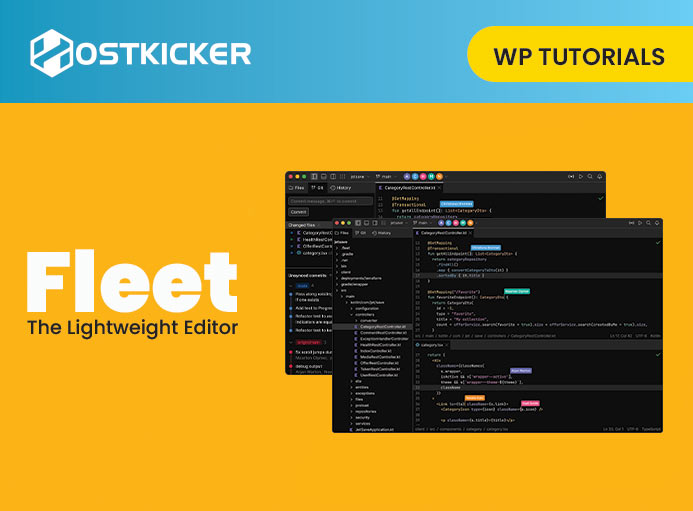A Brief Preview Of Fleet – The Lightweight Editor
Fleet is an extremely useful lightweight editor but it comes with a twist. When this editor is first launched, it is like any other editor, with features like highlighting of syntax, automatic completion of code and other features most commonly used editors offer. Fleet as an IDE is fully functional, contains smart completion, navigation, refactoring, debugging and all other famous editor features all available easily. The building of Fleet has been done from scratch using a new architecture, and to get a new user interface. Let us take a peek at some of the important details that this lightweight editor possesses.
Fleet Is Polyglot
A large variety of technologies are used by developers today not just for different projects, but for one single project as well. The aim is to leverage the features of the environments you are using to your advantage which is why all the IDEs used today use the same platform as their basis. Fleet has taken it one step ahead and made it one single IDE. A developer using Fleet will not have to make use of different IDEs for their functionalities or specific technologies. Fleet makes it all come together as one application.
Fleet Is Distributed
The aim during the development of Fleet was to fulfil the need of those developers who don’t always work on local projects. Fleet has a distributed architecture, meaning that it does not care whether the project is in a container, in another country or is local. With the availability of a file system that is visualized, Fleet can be used while working with remote as well as local projects. The architecture of Fleet has been distributed and departed into the backend, frontend, a file system watcher and a workspace server. This means that Fleet has the ability to be running in a distributed way while making allowance for scenarios where analysis and other operations need to be run on a machine that is remote and only for some instances.
Fleet Is In Space
Setting up an environment before you begin working on a new project can be tedious, you have to be careful to ensure that the settings are correct the dependencies are right, and that everything begins to work. Space adds support, so that it is easy to start the server instance remotely with the help of a source repository, with customization also available with the use of Dockerfile.
Fleet Is Collaborative
Collaboration has been a key factor for building Fleet IDE. It makes allowance for easy collaboration on projects irrespective of local or remote systems being involved. Developers will have the ability to work simultaneously on the same file or different files of the projects, running tests, accessing terminals and other features that should be ingrained in any collaborative IDE.
Building of the Fleet is done with the help of existing technologies and knowledge. Fleet aims to provide a unique experience from a sometimes editor to a fully functional IDE. It is useful whether you want to make use of one single tool as well as for scenarios that may not be suited to other existing IDEs for development that is distributed. Fleet does not exist as a replacement for existing tools, it is to provide greater choices.
